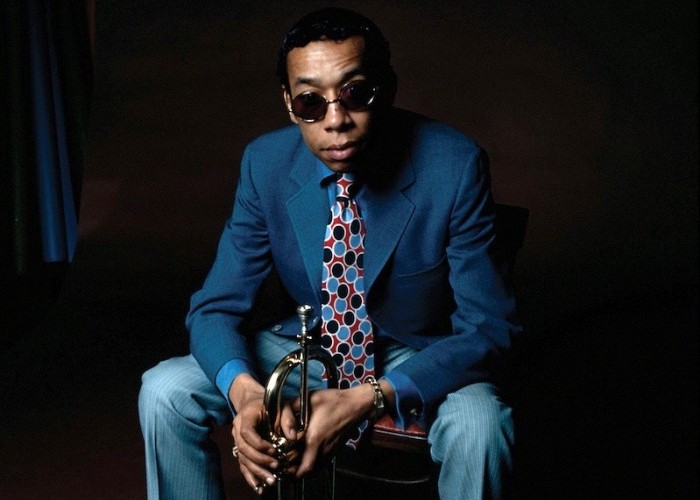Jun 3, 2025 11:25 AM
In Memoriam: Al Foster, 1943–2025
Al Foster, a drummer regarded for his fluency across the bebop, post-bop and funk/fusion lineages of jazz, died May 28…

Lee Morgan (1938–’72)
(Photo: Joel Franklin)There aren’t many artists in the history of jazz who could turn a three-night engagement into 12 albums (eight CDs) of pure musical gold, but the Lee Morgan collection The Complete Live At The Lighthouse, Hermosa Beach, California on Blue Note does just that.
The new boxed set, to be released July 30, catches one of the greatest trumpeters in jazz at the top of his game with a band that is equal to the task: Harold Mabern on piano, Jymie Merritt on electric upright bass, Mickey Roker on drums and Bennie Maupin on tenor, flute and bass clarinet.
The box serves as an evolution of two earlier releases. The first edition of Live At The Lighthouse came out in 1970, the year the recording was made, as a single album, with four tunes. In 1996, an expanded CD version came out with 13 tunes. Now, fans can soak in the beauty of the entire run, complete with introductions, asides and announcements, such as Morgan telling the audience that Blue Note was recording the shows, so he wouldn’t be taking requests or playing older hits.
Even so, in his stellar liner notes, Jeffery S. McMillan, author of the book Delightfulee: The Life And Music Of Lee Morgan, notes that Morgan plays “The Sidewinder” and “Ceora” only once each during the entire run.
The breadth of the material here is astounding. It shows the 32-year-old Morgan and the band really stretching out on music largely written by members of the group, like three extended versions each of Maupin’s “Yunjana” or Maybern’s “The Beehive” or Merritt’s “Absolutions.” And, of course, Morgan’s “Speedball,” the band’s theme, opens and closes sets, including a 14-minute version with Jack DeJohnette, who was in the area visiting family and sat in. The best part is that the sound on these recordings delivers — crisp and clean.
So do the liner notes, from McMillan’s insightful contributions to two interviews conducted by Zev Feldman, co-producer of the box sets, with Maupin and Merritt — the two surviving members of the band — with Merritt passing away shortly after the interview. Beyond that there are insights from Blue Note President Don Was, DeJohnette, Wallace Roney, Nicholas Payton, Charles Tolliver, Eddie Henderson, Dave Douglas and more. And the photography by Joel Franklin and Lee Tanner beautifully captures the artist in that moment.
Some listeners point to this recording as a new direction that Morgan was heading with his music, but we’ll never know. He died 19 months after this date when his partner, Helen, despondent that he was going to leave her, pulled out a gun and shot him between sets at Slugs’ in New York. He was 33 years old.
As a result, we are left with Live At The Lighthouse as a final and lasting example of the young man as an artist. It’s fitting that fans, musicians and scholars now have a complete picture of that time and that music.
Catch an “unboxing” video of the complete package here. DB

Foster was truly a drummer to the stars, including Miles Davis, Sonny Rollins and Joe Henderson.
Jun 3, 2025 11:25 AM
Al Foster, a drummer regarded for his fluency across the bebop, post-bop and funk/fusion lineages of jazz, died May 28…

“Branford’s playing has steadily improved,” says younger brother Wynton Marsalis. “He’s just gotten more and more serious.”
May 20, 2025 11:58 AM
Branford Marsalis was on the road again. Coffee cup in hand, the saxophonist — sporting a gray hoodie and a look of…

“What did I want more of when I was this age?” Sasha Berliner asks when she’s in her teaching mode.
May 13, 2025 12:39 PM
Part of the jazz vibraphone conversation since her late teens, Sasha Berliner has long come across as a fully formed…

Roscoe Mitchell will receive a Lifetime Achievement award at this year’s Vision Festival.
May 27, 2025 6:21 PM
Arts for Art has announced the full lineup for the 2025 Vision Festival, which will run June 2–7 at Roulette…

Benny Benack III and his quartet took the Midwest Jazz Collective’s route for a test run this spring.
Jun 3, 2025 10:31 AM
The time and labor required to tour is, for many musicians, daunting at best and prohibitive at worst. It’s hardly…